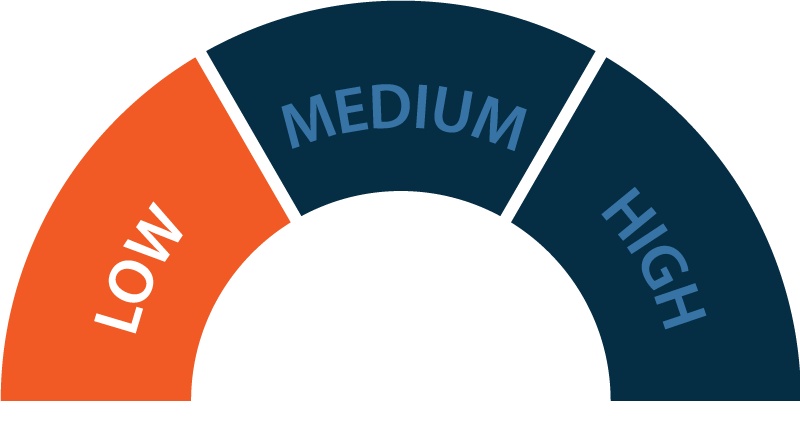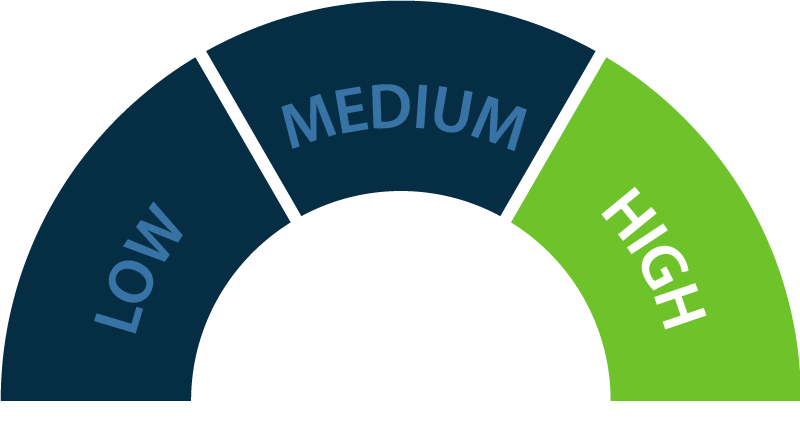Sales enablement is a collaborative strategy designed to increase predictable sales results. Put another way: it’s the secret sauce that will help your sales team keep closing on leads — a must-have when times are tough and budgets are tight. But understanding the value of sales enablement is only the first step. How do you build a sales enablement framework that delivers results?
First of all, let’s look at the key facets of an effective sales enablement framework:
- Collaboration across all customer-facing teams
- Cross-functional strategies that ensure consistent support and services
- Automation of manual or repetitive tasks to create repeatable processes
- Development of sales skills (prospecting, communications, relationship building, active listening, negotiation, etc.)
- Creating content and tools that add value to every customer interaction
Remember, not all sales enablement initiatives are created equal. While most B2B organizations have some form of sales enablement in place, what that entails will vary based on the program’s maturity. Your sales enablement process might simply involve having the marketing team produce sales collateral that supports the buyer journey. Or it could be an official function — with headcount and budget — that sits somewhere between sales, marketing, and human resources.
Sales Enablement Maturity Scale

Low
Marketing supports sales teams with some content, but no shared sales enablement processes, technologies, or goals exist.

Medium
Marketing and sales teams have an official lead generation program and some shared sales enablement processes, technologies, and goals.

High
Sales enablement is a distinct function that sits alongside marketing, sales, and customer success and is supported by human resources. Sales enablement processes, technologies, and goals are clearly defined and ingrained in the culture.
3 Facets of Your Sales Enablement Framework
Your organization’s sales enablement strategies will evolve as your goals change, but you should always keep three things in mind as you build and iterate your system.
People
Teams and third-party agencies required to support the strategy
Processes
The shared systems that align sales and marketing teams, create accountability, and set goals to measure the success of the strategy
Technology
The tools that support sales enablement processes, automate manual tasks, and free up time to spend on high-value sales enablement activities
Let’s explore what’s involved in each one.

1. People in Your Sales Enablement Framework
The secret to sales enablement success is including people from cross-functional teams, each with complementary skills and knowledge to contribute. Some examples include:
Sales and Sales Operations
Sales teams — and in medium to high-maturity organizations, sales operations teams — set shared goals for everyone involved in sales enablement.
These teams are ultimately responsible for monitoring sales training and enablement performance and overseeing processes to remove roadblocks, address knowledge gaps, and help sales teams be effective.
Marketing
Regardless of your organization’s maturity level, marketing teams play a critical role in your sales enablement framework.
Marketers are a vital cog in the lead generation process. They work closely with sales teams, participating in customer events to gain a deeper understanding of the people sales reps encounter along the buyer journey and developing content to address questions and issues at various stages of that journey.
Human Resources
HR team members are the first face a new sales or marketing person sees. From candidate screening and recruitment to onboarding and training, HR plays a vital role in building an effective team.
In low-maturity organizations, HR and people teams may be responsible for ongoing training and development of sales and marketing staff. In medium- to high-maturity organizations, they may provide training expertise or recommend training technology platforms that support sales enablement efforts.
Third-Party Agencies
Many organizations outsource the development of sales enablement content to third-party agencies (like TPM) to free up teams to focus on lead generation or other revenue-generating tasks. External agencies can also provide a fresh (expert) perspective on buyer personas, buyer journeys, content mapping, and sales enablement.
Our team works with organizations of all sizes to help them shore up their sales enablement processes.
Organizations like PayPal, for example, work closely with Total Product Marketing to build creative sales enablement materials that align with the organization’s sales framework and methodology. Total Product Marketing builds everything from interactive sales playbooks and presentations to sales sheets and FAQs for product launches and updates to internal and external communications.
Sales Enablement Maturity Scale: People

Low
Marketing works with sales teams to create materials that support salespeople (or hire an agency to help build sales enablement materials.

Medium
Marketing team members run lead-generation programs and hand marketing qualified leads to business development or sales to qualify further or hire an agency to help build or run lead-generation programs.

High
The organization hires and develops sales enablement professionals to work closely with marketing, sales, customer success, and human resources to build end-to-end enablement programs or hires an agency to help create content or refine programs.

2. Processes in Your Sales Enablement Framework
Sales enablement processes help ensure that the roles and responsibilities of all players are clear and teams are aligned. Processes can include:
Lead Generation
overarching inbound strategy. But it could be argued that lead generation is also a form of sales enablement since, at its heart, it’s about creating leads — a necessary part of enabling salespeople to close deals.
Lead Scoring and Qualification
Overwhelming your sales team with information from contacts that are a poor fit for their business isn’t helpful. It’s kind of the opposite of enablement. This is why qualifying leads is so important.
Marketing, sales, or sales enablement teams implement lead scoring systems that rank prospects based on their data and assign them a score that indicates how good a fit a potential lead is.
Data Analysis and Reporting
Today’s sales team is data-driven. But too much data can be counterproductive — especially if your team doesn’t have the ability to convert information into insights. Sales teams often have a high-level understanding of what reports are relevant to their business but lack the technical ability or time to create and manage these reports.
Sales enablement professionals can bridge this gap, creating systems to transform raw data into a valuable asset for sales teams and providing standardized reporting systems that give sales both holistic and granular views of their progress. For example:
- Sales rep activities (emails sent, demos provided, training completed, etc.)
- Win/loss analysis
- Leads generated (and who created or influenced them)
- Pipeline creation (and who created or influenced it)
Account-Based Marketing
Sales enablement and account-based marketing are a perfect pairing. Sales enablement teams can add value to ABM initiatives in a variety of ways:
- Training salespeople to communicate and deliver on-brand messaging and content
- Recommending tailored content and messaging based on individual buyers’ behaviours
- Increasing the ability to target prospective customers using real-time data to determine content that will advance the sales cycle
Sales Enablement Maturity Scale: Processes

Low
Basic sales reporting is established.

Medium
More advanced reporting is put in place to track leads through the sales funnel.

High
Sales enablement teams manage the entire lead-generation, scoring, and reporting functions and enable salespeople with content for each stage of the buyer journey.

3. Technology in Your Sales Enablement Framework
There’s no more 9 to 5 in sales. As traditional in-person sales models give way to digital channels, technology plays an increasingly important role in the sales enablement process. Key technologies include:
Customer Relationship Management
Sales enablement is all about empowering your sellers with the support, resources, and systems they need to identify and sell to the right buyers at the right time. Customer relationship management (CRM) software is a must-have for sales teams, regardless of organizational maturity.
CRM platforms like Salesforce, Hubspot, and Microsoft Dynamics track customer interactions, shorten the sales cycle, and provide data and insights to help refine the sales process. Choose a CRM that’s robust, easy to use, and able to scale up as your company grows and your sales enablement processes mature.
Sales Outreach
Reaching out to new prospects and leads is arguably the most critical task in the sales cycle (and also the most time-consuming). Tools like Salesloft, Hubspot Sales Hub, and Outreach alleviate most of the manual, repetitive work associated with sales outreach so the team can focus more on higher-value tasks.
In medium- to high-maturity organizations, sales enablement teams provide email templates and marketing materials for salespeople to customize and schedule using these tools.
Sales Enablement Tools
Low- to medium-maturity organizations often use intranets or file-sharing to coordinate sales enablement material, while high-maturity teams have dedicated sales enablement technology to empower their teams.
Platforms like Highspot and Seismic provide visibility across the sales content lifecycle. They typically have powerful search, scoring, and syncing capabilities that keep marketing and sales organized, aligned, and on-brand.
Sales Enablement Maturity Scale: Technology

Low
Basic CRM is in place for tracking leads and pipelines.

Medium
Marketing and sales use shared drives or intranet pages to share sales enablement content.

High
CRM is integrated with sales enablement technology to report on the success of enablement efforts.
Building a Sales Enablement Culture
Developing a sales enablement framework is the first step toward making a business case for the resources you need to create a sales enablement culture. Don’t underestimate its importance. Sales enablement is not a one-off initiative. It must be applied consistently and collaboratively — with full support from leadership teams — to achieve the best results.
Ready to build your sales enablement framework? Talk to the experts at TPM today.
Enjoyed this read?
See our full collection of Sales Enablement blogs to close more deals, faster!



